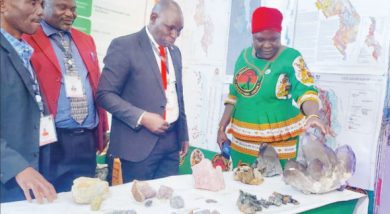Malawi tobacco registration starts
 The Tobacco Control Commission (TCC) today (Tuesday) commences the registration exercise for tobacco growers in preparation for the 2014/15 season.
The Tobacco Control Commission (TCC) today (Tuesday) commences the registration exercise for tobacco growers in preparation for the 2014/15 season.
TCC chief executive officer Bruce Munthali said this to Business News on Friday when asked to provide an update on the 2013 tobacco marketing and its outlook.
He justified the early commencement of the registration exercise, saying the move is in tandem with recommendations of the newly adopted Integrated Production System (IPS)— an initiative in which tobacco buyers combine farming and marketing strategies by dealing directly with farmers in producing the leaf.
“We want tobacco growers to register while at the same time selling their tobacco on the market. This is the time when they have money,” said Munthali.
He said early registration will enable growers to know minimum prices for their tobacco in advance before signing contracts with the buyers.
Munthali said in the wake of early registration, TCC is just reverting to a practice common in the 1970s.
“We are just going back to the old calendar of tobacco registration. We also want to see growth in flue cured tobacco, and we are requesting buyers to present their trade requirements,” he said.
Commenting on the general performance of the market, Munthali said as of third week, the market was still impressive on account of stiff competition at both auction and contract systems.
He said prices are still high as $2.50 (K1 000) per kilogramme for high quality burley tobacco and with 90 cents (K360) for low quality tobacco.
Munthali said this year’s tobacco has very good flavour characteristics and has been well supported through IPS.
“Our embracement of IPS has moved Malawi to a core market from an opportunity market. Our tobacco has both good nicotine and firing characteristics,” he said.
When she opened the market at Lilongwe Auction Floors, President Joyce Banda appealed to tobacco growers to manage their tobacco well by following good agricultural practices and ensuring zero tolerance on non-tobacco related materials (NTRM) and nesting before presenting their tobacco to selling floors.
Last year, both the volume and revenue from the leaf tumbled miserably to 79.8 million kilogrammes and $177 million from a volume of 236 million kilogrammes and $292 million realised in the previous year respectively.
Available statistics show that tobacco is contributing about 25 percent to the gross domestic product (GDP) and employs up to 12 percent of the entire population.
According to TCC, this means that tobacco still remains the country’s main source of economic livelihood at micro level as well as an engine of growth at macro level.





